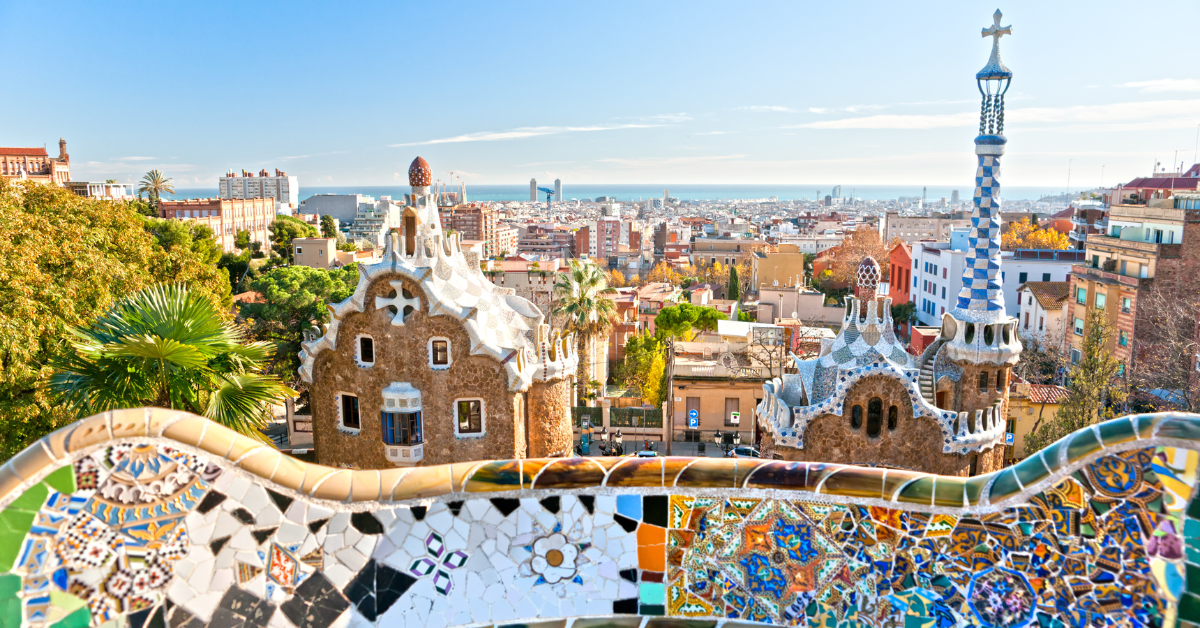Barcelona is a city that fascinates the world with its art, sports, and Mediterranean lifestyle. In Japan, the city’s name can be rendered in Kanji as “巴塞羅” or “巴塞洛納”, phonetic transcriptions that carry cultural nuance. This article explores their meanings and examines how Japanese people perceive Barcelona beyond tourism.
- Barcelona in Kanji: “巴塞羅” and “巴塞洛納”
- Situations Where Kanji Renderings Appear
- The Image of Barcelona in the Eyes of Japanese People
- Barcelona as a Sports City
- Barcelona as a Symbol of Art and Architecture
- Culinary Culture and Lifestyle
- The Catalan Independence Movement and Japanese Perspectives
- Travel Trends among Japanese Visitors
- Conclusion
Barcelona in Kanji: “巴塞羅” and “巴塞洛納”
Barcelona is typically written in Katakana in Japanese, but in Kanji it becomes “巴塞羅” or “巴塞洛納.” These are phonetic renderings borrowed from Chinese usage and became known in Japan through that channel.
| Writing | Sound Mapping | Characteristics |
|---|---|---|
| 巴塞羅 | Ba-Se-Ro | Concise and abbreviated, often seen in older records or simplified usage |
| 巴塞洛納 | Ba-Se-Ro-Na | More faithful to the actual sound, widely used as the formal transcription |
The difference between “羅” and “洛納” lies in how closely the pronunciation is reproduced. “巴塞洛納” is regarded as the more accurate form and is typically used in formal contexts.
Situations Where Kanji Renderings Appear
In modern Japanese writing, “Barcelona” in Katakana is the standard, but there are instances where the Kanji forms appear.
- Historical records and older newspapers
- Books or maps translated from Chinese
- Literary or artistic contexts aiming to evoke exoticism
While uncommon in daily life, these renderings carry cultural and expressive value.
The Image of Barcelona in the Eyes of Japanese People
To Japanese people, Barcelona represents a city where art, sports, and tourism converge.
| Field | Impressions among Japanese people |
|---|---|
| Soccer | FC Barcelona, star players, the massive stadium Camp Nou |
| Architecture | Gaudí’s works, Sagrada Família, Casa Batlló, and Park Güell |
| Tourism | Mediterranean port city, scenic beaches, passionate cityscape |
| Culture | Catalan identity and independence, reputation as a cultural capital |
| Cuisine | Paella, tapas, and seafood-rich Mediterranean diet |
Together, these aspects form an image of Barcelona as a dream destination for many Japanese travelers.
Barcelona as a Sports City
Barcelona is globally recognized as a city of sports.
- Soccer
FC Barcelona is one of the most celebrated clubs in the world, enjoying immense popularity in Japan. Legendary players such as Messi, Xavi, and Iniesta have left a lasting mark on Japanese fans. - Camp Nou
The stadium, with a capacity of nearly 100,000, transforms into a sea of passion on match days, making it a tourism draw in itself. - The Olympics
The 1992 Barcelona Olympics revitalized the city, tying sports with urban development and boosting its status as a global tourist hub.
| Sports Element | Features | Japanese Perception |
|---|---|---|
| FC Barcelona | World-class football club | Symbol of soccer culture |
| Camp Nou | Nearly 100,000 capacity stadium | A place to feel passion and intensity |
| 1992 Olympics | Accelerated urban renewal | Seen as a model of “sports-driven city transformation” |
Barcelona as a Symbol of Art and Architecture
Barcelona is widely known as Gaudí’s city.
- Sagrada Família
An unfinished basilica that nonetheless overwhelms visitors with its scale and detail. - Casa Batlló & Casa Milà
With their organic curves and bold decoration, these works resonate strongly with Japanese aesthetics.
| Landmark | Features | Japanese Impression |
|---|---|---|
| Sagrada Família | World-renowned unfinished cathedral | “A must-see once in a lifetime” |
| Casa Batlló | Curved lines and vivid colors | Dreamlike and imaginative |
| Casa Milà | Wave-like facade | A fusion of tradition and avant-garde |
Culinary Culture and Lifestyle
Barcelona’s food culture also strongly appeals to Japanese travelers.
- Paella and Tapas
Dishes based on seafood and Mediterranean ingredients align well with Japanese tastes. - Market Culture
The Boqueria Market, with its array of fresh produce and seafood, offers an authentic experience of local life.
| Food Culture | Content | Japanese Affinity |
|---|---|---|
| Paella | Rice and seafood-based dish | Similar to Japanese mixed rice, familiar taste |
| Tapas | Wide variety of small dishes | Comparable to Japanese izakaya dining |
| Market Culture | Vibrancy of Boqueria Market | Appeals to Japanese appreciation for fresh ingredients |
The Catalan Independence Movement and Japanese Perspectives
Catalonia, of which Barcelona is the capital, has long pursued independence. For Japanese observers, this presents Barcelona as not only a tourist city but also as a symbol of a region asserting its identity.
While not a daily concern for tourists, news coverage has made Japanese people more aware of Barcelona as a city with its own cultural and political uniqueness, beyond being just “a Spanish city.”
Travel Trends among Japanese Visitors
When Japanese people visit Barcelona, several travel patterns emerge:
- Short-stay tourism focusing on major attractions
- Art-oriented trips with Gaudí’s works as highlights
- Sports-focused visits with younger generations eager to watch matches at Camp Nou
These patterns illustrate Barcelona’s broad appeal across different generations of Japanese travelers.
Conclusion
Barcelona can be rendered in Kanji as “巴塞羅” or “巴塞洛納,” with the latter being considered the more formal and accurate form. For Japanese people, the city embodies multiple identities:
- A sports capital, symbolized by FC Barcelona and the Olympics
- An artistic and architectural hub, defined by Gaudí’s masterpieces
- A culinary destination, where Mediterranean flavors resonate with Japanese tastes
Additionally, the Catalan independence movement highlights Barcelona’s complex identity, making it a city understood in more layers than tourism alone. While Kanji renderings are not common in daily Japanese, they stand as a cultural bridge to appreciate the city’s richness.






